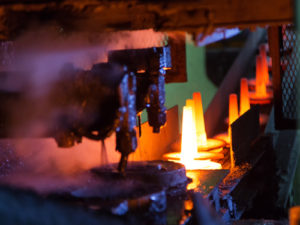
Hot Chamber Injection System
A hot chamber injection system is a vital requirement for optimizing the casting process. Proper design of the system is therefore important in order to correctly optimize the castings and thus obtain the desired results. In the design, the two major constituents such as the feed and the runner form the connection amidst the injection system and the shot entry. The differences in the structure and size of the feed and the runner have a perceivable impact on the casting flow. Alterations in the shape can produce a variety of results that can minimize any defects in the finished product.
Positioning of the Runner
The correct positioning of the runner is based on the requirement that the distance covered by the molten metal should be the least to prevent premature cooling. The flow is also directed mostly to the smallest side of the cavity, and in case of more than one-shot entry, it would result in a non-convergent flow thus leading to air trappings and turbulence.
Positioning the runner in such a manner to get parallel and divergent flows is the best way. The positioning of the runner is important to regulate the distribution of shrinkage porosity. Placing the shot entry to the thinner parts of the casting will also lead to creating a more disperse and uniform porosity. A reduction in porosity is possible by placing the shot near to the thicker parts of the casting.
Runner Designs
The shape of the runner is an important aspect when considering an optimization of the casting process. The ratio between the runner’s section and shot entry is one crucial thing to consider while designing. Runners that are smaller enable energy and material savings at the cost of more power from the injection system and premature solidification.
More energy and material is required for large runners, but it has increased hydraulic efficiency and thermic value of the mold. In the design, any sharp edges and improper flow deviations must be clearly avoided to prevent turbulence. Proper consideration must also be given to the various errors that occur during the construction and assembly since it can cause bottlenecks and bulges.
Feed
The feed acts as a junction and acts as a passage amidst the channel and the shot entry. They are designed to steady the shot entry that will help the metal to stay away from the walls and thus provide a direct metal flow. Fan feed and double tangent feed are the two common models of feed.
The fan feed gives a narrow flow with increased speed in the middle portion and is therefore ideal for short and thick shot entries. A larger flow is produced in a double tangent feed and has increased speeds on the sides making it perfect for long and thin shot entries.
